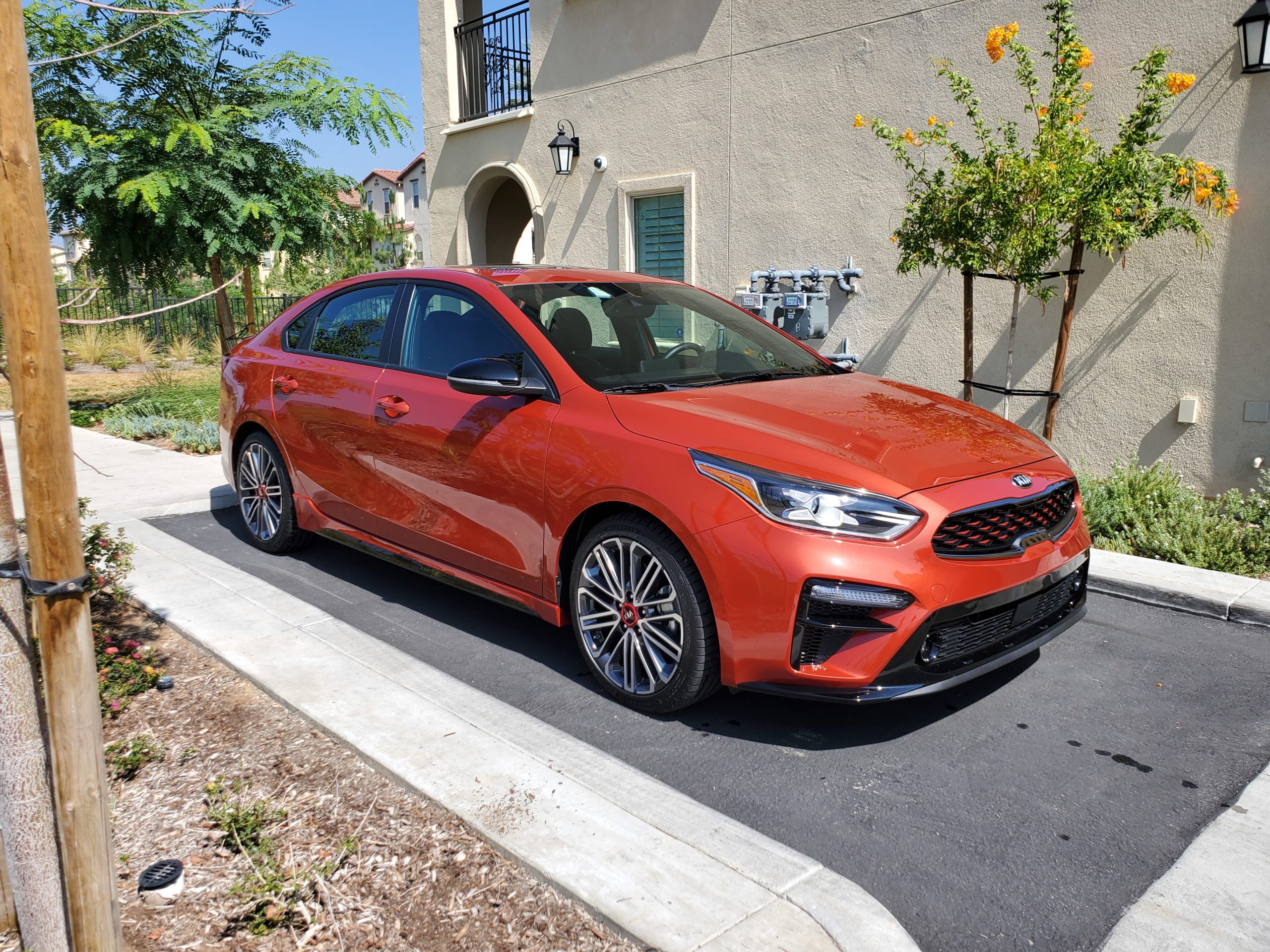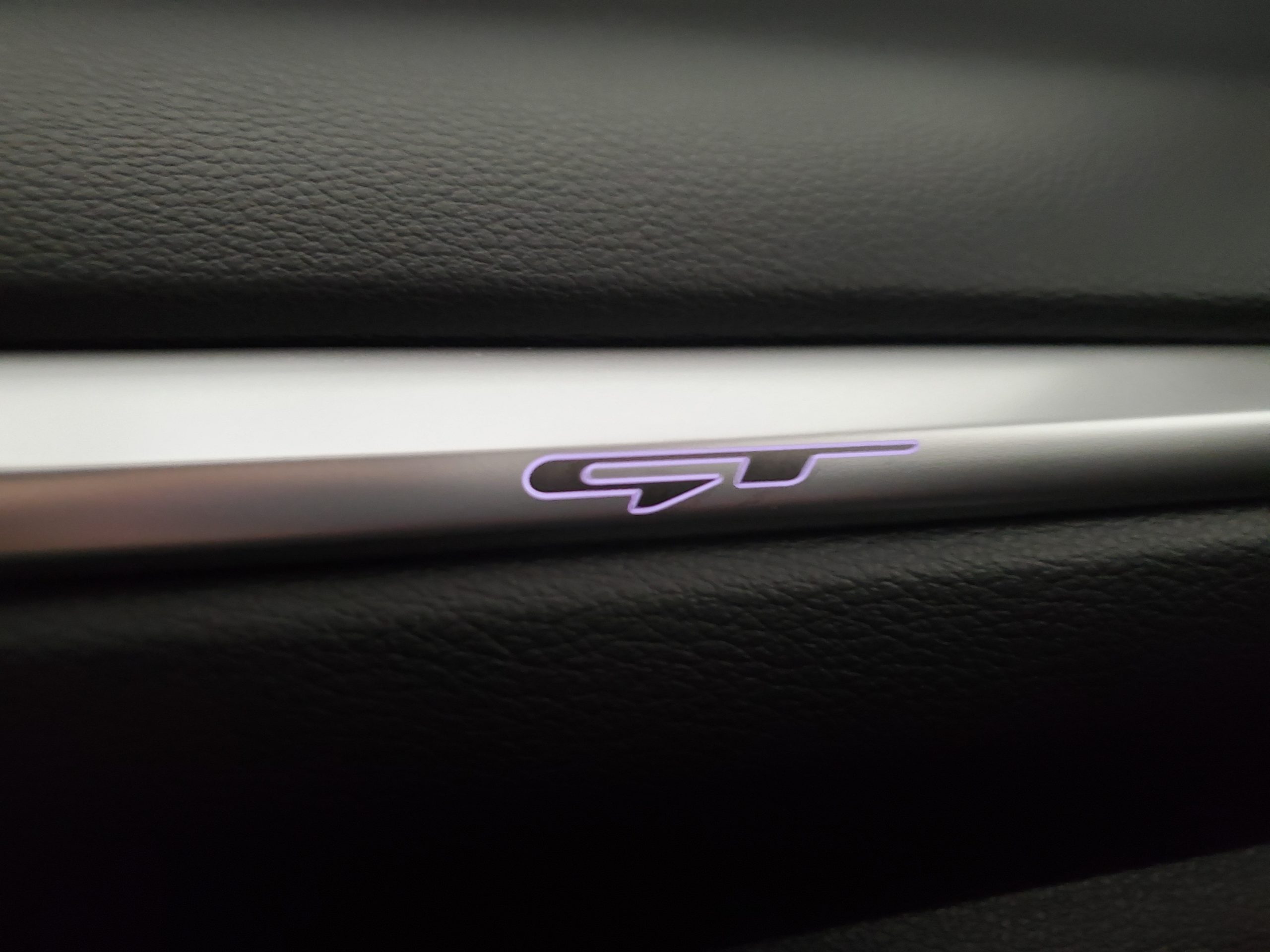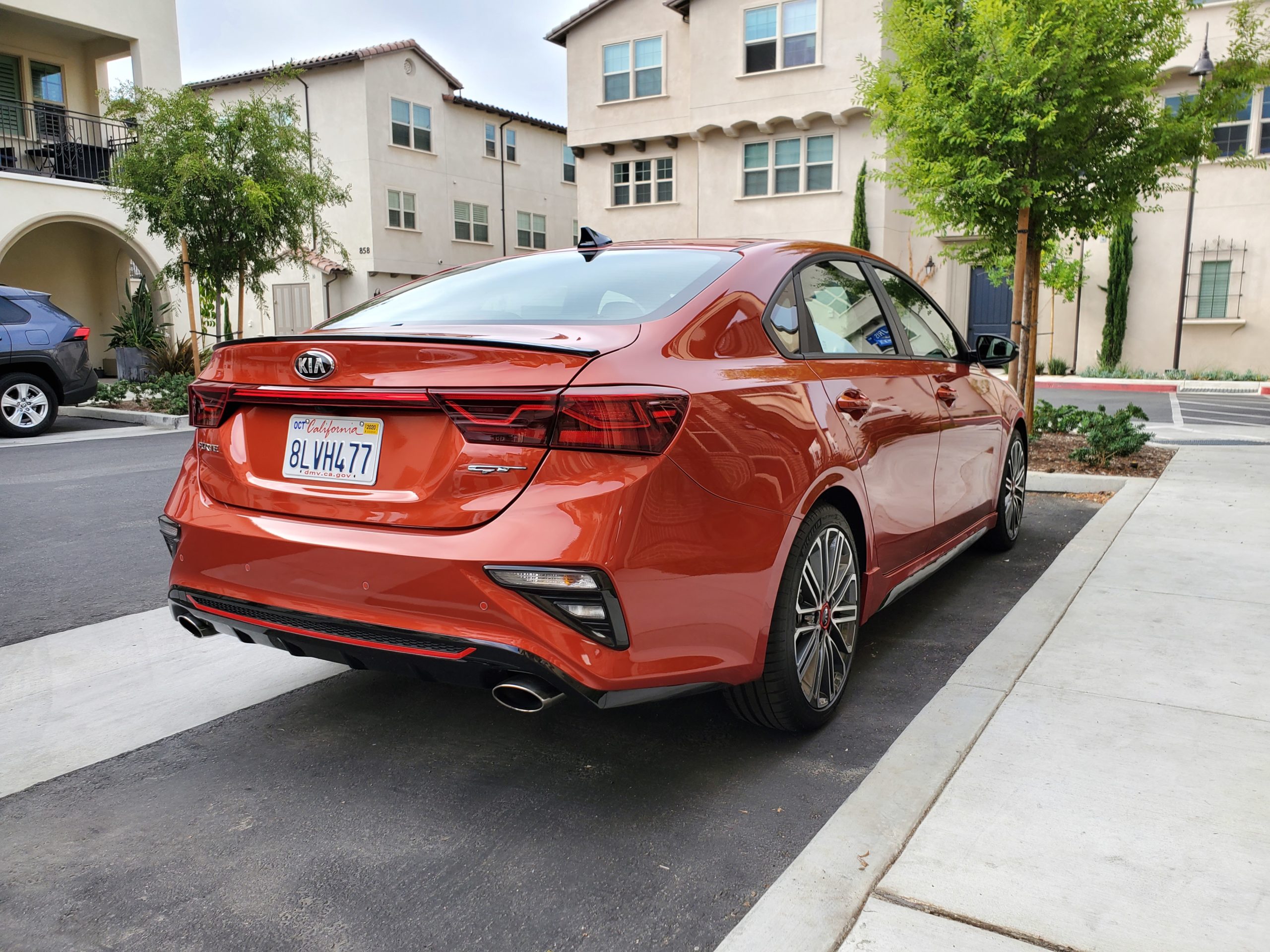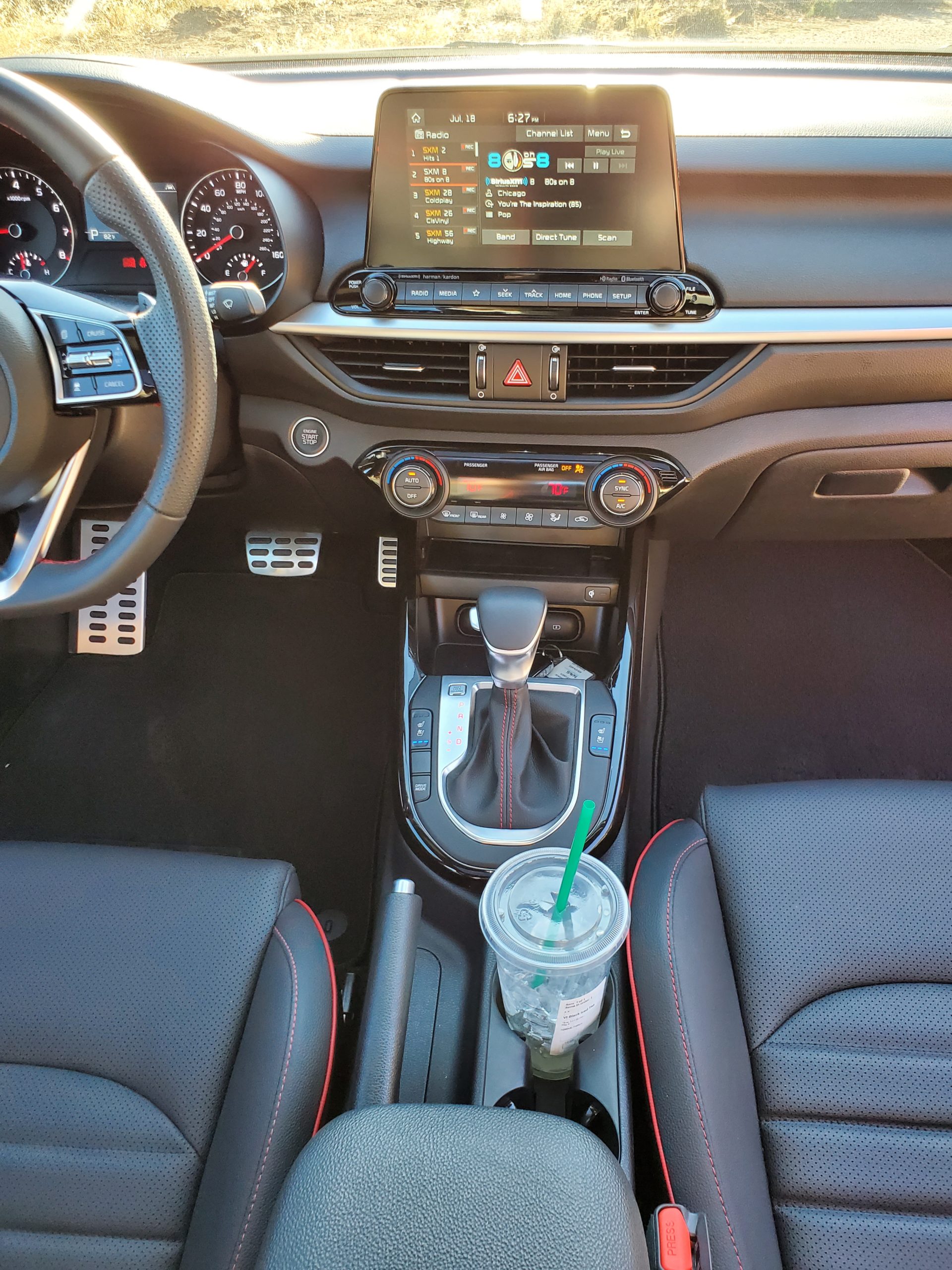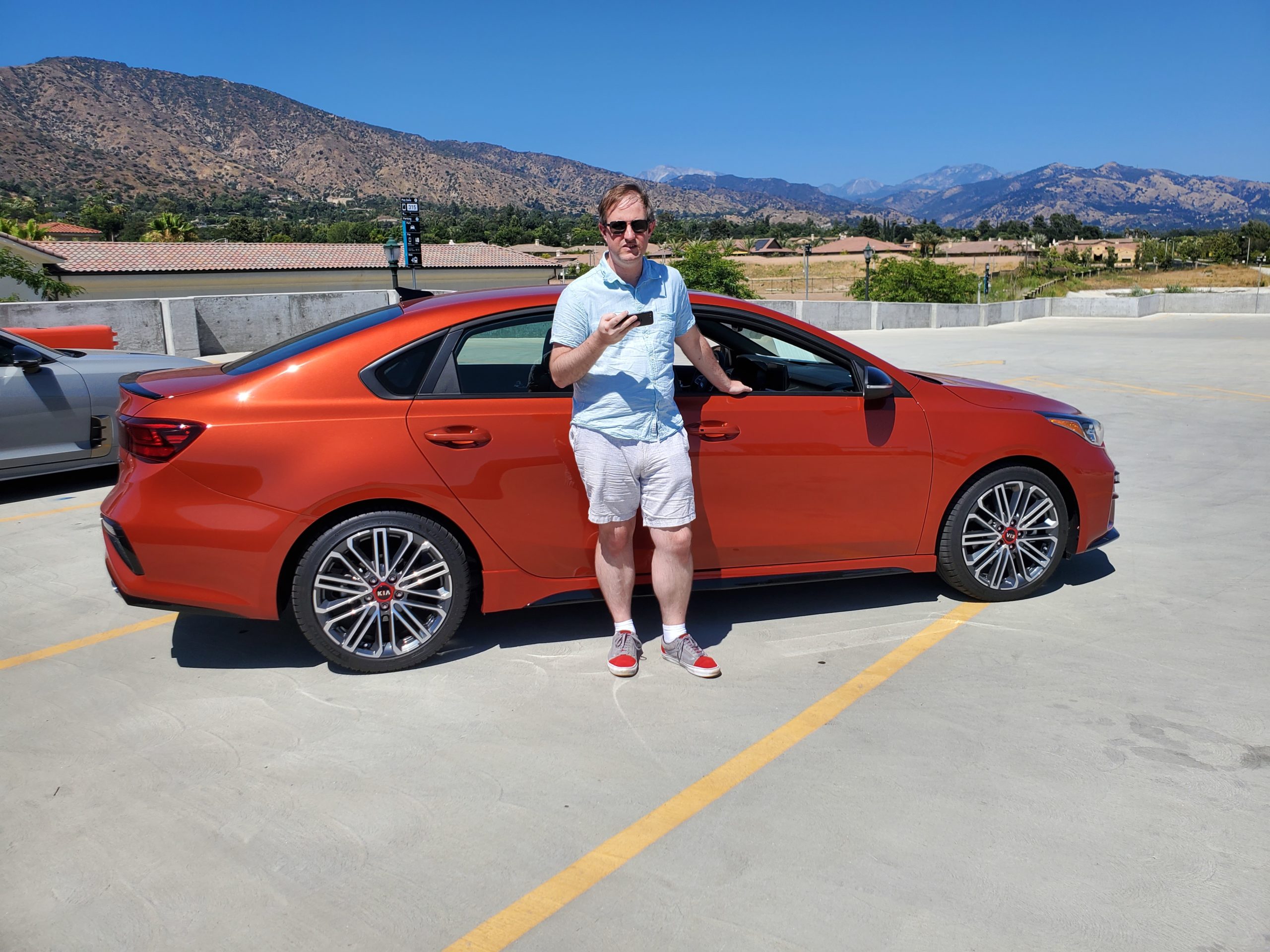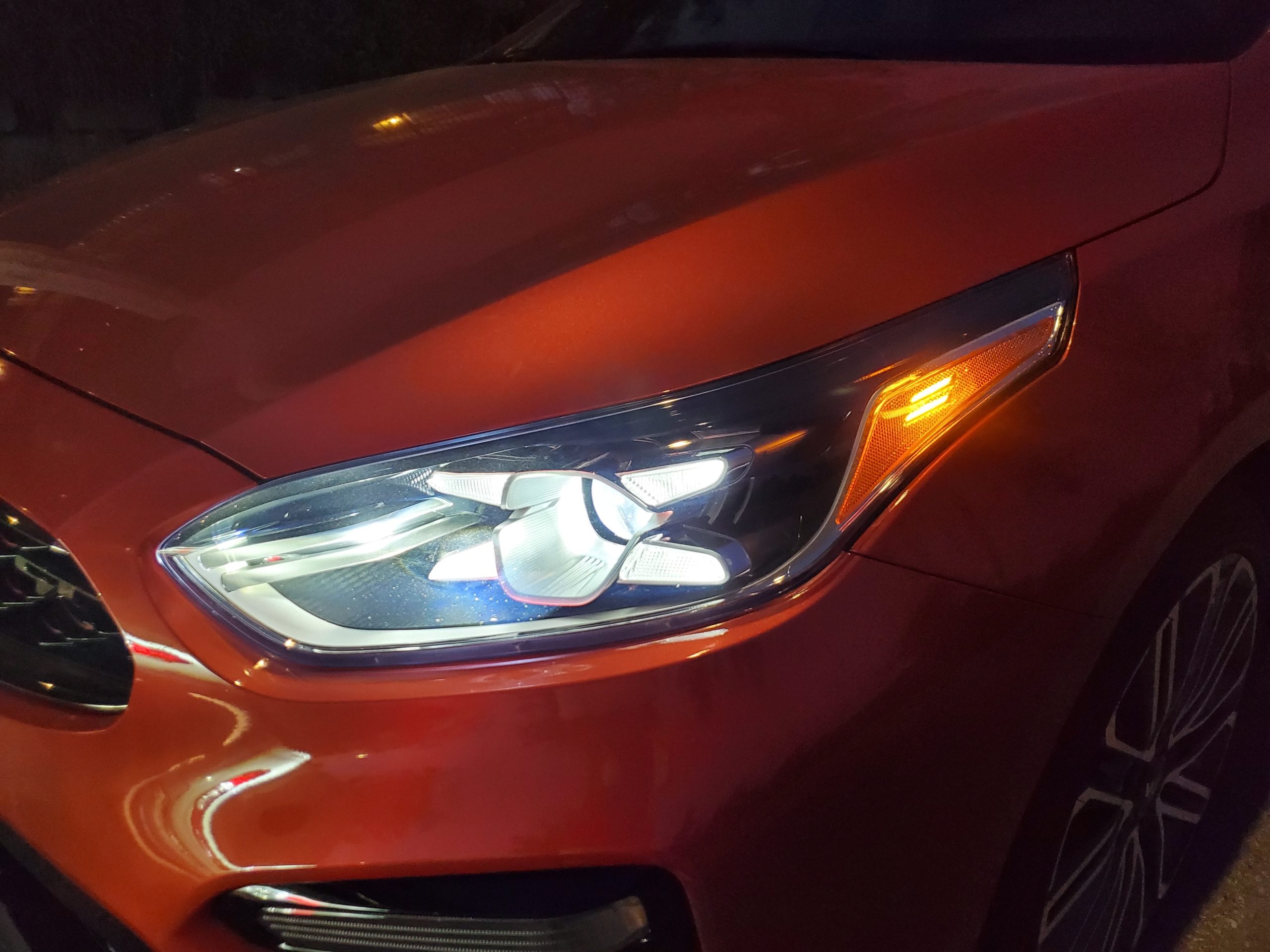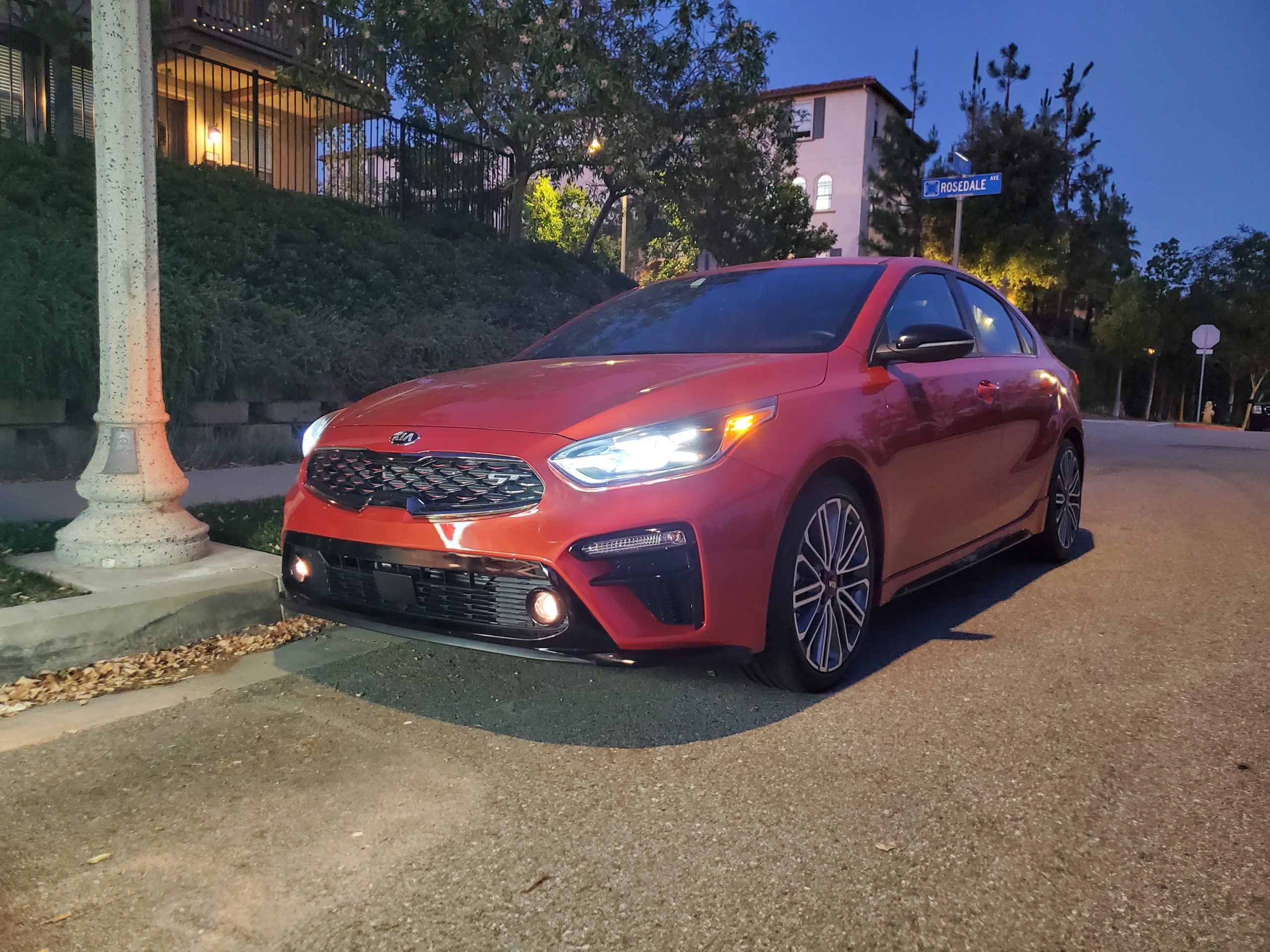An impressive alternative to the Civic Si, but does the GT badge work on this car?
Kia rolled out an all-new third-generation Forte compact sedan in 2019, but waited one model year to introduce the more performance-oriented Forte GT. The GT variant is a direct competitor to the Honda Civic Si sedan, with a 201 horsepower, 195 lb-ft torque turbocharged inline four.
[ads id=”9″]
It’s the same engine you’d find on a Veloster Turbo or a Soul GT-Line, and unlike the Civic Si which was only available with a manual transmission, offers buyers the choice of either a 6-speed manual or a 7-speed dual clutch automatic transmission with paddle shifters. Additionally, the Forte GT offers a GT2 package which comes with a host of luxury and convenience features that aren’t available on the Civic Si.
Unfortunately, the fully loaded GT2 package is only available with the automatic transmission, and that’s the version I got to test. Nevertheless, I walked away impressed by the car’s performance. Jumping in the Forte GT for the first time, I noted that the automatic is set by default to the least sporty setting, which is a shame because it’s only after you learn how to use this transmission that you get the most out of the car, so it’s possible someone test driving this car at the dealer may walk away unimpressed simply because they didn’t realize how to use it to its full potential.
After a day or two, I realized that I needed to activate sport mode, move the gearshift lever to the left, to its “S” setting, and then pull the left “minus” paddleshift so that the transmission moved to “1” (not “S1”) to prepare the car for spirited driving.
When I did that, I found a quick, lively, responsive car that is able to accelerate quickly enough (about 6.7 seconds from 0-60mph), hold gearshifts right to the 6500rpm redline, and shift immediately upon tapping those paddle shifters. What was even more impressive was the handling in this version of the Forte. It’s been tuned excellently, with very little body roll and a stiff suspension that gives you confidence when you’re pushing it hard. Speaking of which, this car’s power is matched perfectly to its handling ability.
When canyon carving, I never felt that the car was near its limits, despite throwing it through some chicanes at high speed. While I give credit to the front-wheel-drive powertrain and suspension setup for this, I would be remiss if I didn’t point out one of the biggest reasons why this car felt so good to drive – the $200 optional summer tires, which are Michelin Pilot Sport 4 tires just like the ones on the Forte GT’s big brother, the Stinger GT.
I strongly recommend you to pay the extra couple hundred for this option. I do wish I had been able to drive the 6-speed manual version of this car, because I think I’d have been able to harness more of the car’s performance without the learning curve involved in the DCT version I was driving.
While the Forte GT has 4 less horsepower than the Civic Si, it does have more torque, and in terms of performance, I would say the two cars are neck and neck where it counts.
[ads id=”8″]
However, while I think the Forte GT is a brilliant performer, I am also a little bit conflicted. That’s because although I was comparing it favorably to the Civic Si, I also kept seeing that GT badge in the corner of my eye (it is featured prominently on the steering wheel, the dashboard brightwork trim, and the seats, after all). I was thinking about the Stinger GT, the brilliant grand touring car that introduced the Kia GT badge and took the world by storm, matching and in some cases outright beating cars that cost tens of thousands of dollars more.
I was also thinking about the Civic Type R and the Veloster N which both outshine the 2020 Forte GT in every way. Should Kia have really slapped that GT badge on the car? After all, this exact same powertrain lives in the Kia Soul and is badged as a GT-Line there, rather than a full GT, which seems more reasonable.
After thinking this through, I believe that Kia does slightly cheapen the GT badge by putting it on this car. Sure, if they gave us the Veloster N engine in this car, it would definitely be worthy of the name. But in this application, I kept thinking that it may have been better for them to call this the Forte GT-Line, and then rename the current GT-Line as the Forte S.
[ads id=”8″]
Even though it might not have the full performance I expected from a GT-badged Kia, the Forte GT does offer a unique feature set over the regular Forte that sets it apart and will please buyers who opt for this trim level.
Starting with the exterior, the Forte GT has several GT-exclusive parts. For example, the dark chrome trim on the grille edges, red plastic inserts within the grille itself, and GT badge in the front grille make it unmistakable from the front, along with the GT-exclusive front LED headlights with four daytime running lights flanking them and two amber LED strips for the side markers. They look sporty yet sophisticated, although the turn signals and fog lights are the same found in lower Forte trim levels and are not LED.
The Forte GT features clean styling all around, which is something that sets it apart from competitors like the Honda Civic and Hyundai Elantra, which both feature complex and overstyled design languages. Each character line and crease on the Forte GT is purposeful and uninterrupted, and it ends up looking good from every angle. It’s a simple and sophisticated design language that makes it look more grown up.
The GT has several gloss black elements such as the side view mirrors, sharkfin antenna, unique side skirts with gloss black inserts, and subtle rear lip spoiler that sits high up on the rear deck in an attractive way. Additionally, the rear bumper features a red accent line which is unique to the GT model, along with a twin exhaust system that looks great, and sounds even better. Seriously, this is one thing Kia got right – the exhaust sound tuning is excellent. It crackles and pops, and under load it will give you a satisfying kick with each gear shift.
The Forte GT also gets unique taillights with an LED pattern that looks a little like a racing circuit. While the taillights do connect in the middle, that middle portion doesn’t light up. And the GT gets exclusive 18” alloy wheels that are painted in two-tone: a bright machined silver and a dark gray. There’s also some red trim around the center caps, but I prefer the look of this car with powder coated black wheels like some of the members of Forte GT clubs online have done aftermarket.
[ads id=”8″]
Moving to the inside, Kia has similarly styled the Forte in a sophisticated and simple manner, which features an 8” touchscreen rising out of the dashboard, with redundant buttons and knobs at the base of the infotainment head unit. That infotainment system does offer Android Auto, Apple CarPlay, SiriusXM, HD Radio, and a connection to a 320-watt Harman Kardon audio system with Clarifi for very clear-sounding audio. Kia navigation isn’t included in this trim, and you can only get it in the Forte EX.
The gauge cluster features standard gauges with a 3.5” color display in the center which offers plenty of control over all the car’s systems, including advanced safety features such as smart cruise control, lane keep assist, active forward collision avoidance, blind spot monitoring, rear cross-traffic alert, and more courtesy of parking sensors in the rear and a radar system in the lower front grille.
The steering wheel controls are large, easy to use, and high quality, and sit on a leather-wrapped D-cut steering wheel with red cross-stitching to match the sporty attitude of the car. Similarly, the full leatherette seats on this Forte GT2 have red piping and feature three-stage heating and cooling functions.
There’s two-zone automatic climate control and rear climate control vents which is unusual in the compact sedan segment but very welcome, especially in these summer months. The dashboard also features two Stinger-inspired circular air vents on the outboard sides which are another nod to the Stinger.
The GT2 package provides ambient lighting that allow you to choose one of six colors, with an option to automatically change the ambient lighting color based on the drive mode selected. That ambient lighting comes out of a series of dots on the driver and passenger door trim next to the interior door handles, as well as a cool outline of the GT badge on the silver trim on the dashboard. On the floor, you’ll find aluminum pedals that look sporty and high quality.
[ads id=”8″]
Rear seat room is good, with plenty of headroom and adequate legroom that’s better than the Civic but not quite as good as some other compact sedans like the VW Jetta or Nissan Sentra. On the other hand, the Forte’s trunk space is massive, with 15.3 cubic feet that dwarfs some other cars in the segment. And you can easily fold down the back seats to provide plenty more cargo space if needed.
From a pricing perspective, the Forte GT starts at and MSRP of $23,455 for the 7-speed dual clutch transmission, including destination. The 6-speed manual version goes for $24,055, and then if you want the fully-loaded GT2 with summer tires like I tested, you’re looking at $26,455. Compared to the outgoing Civic Si, which starts at $26,155 after destination, or $26,355 with its own summer tire option, you’re paying $100 more for a Forte GT2, but if you forgo the luxuries, which are not even available in the Civic Si, you can save almost $3,000 by choosing the Forte GT over the Civic Si.
The 2020 Forte GT is a great all-around package. It’s sporty, fun to drive, easy on the eyes, full of features, and an amazing value. Plus, with the Civic Si out for the time being, this may be your best option for a sporty compact sedan in today’s market. I just wish there was a version of this car more worthy of the GT badge that could compete more closely with the Civic Type R and Veloster N.












